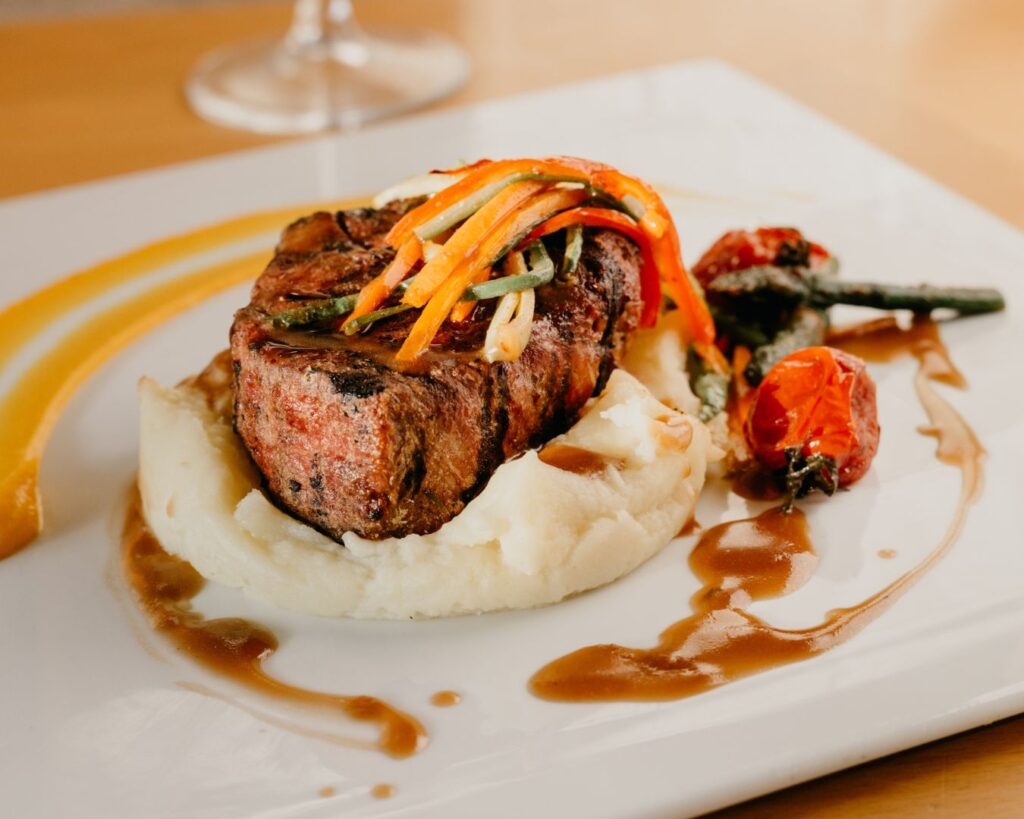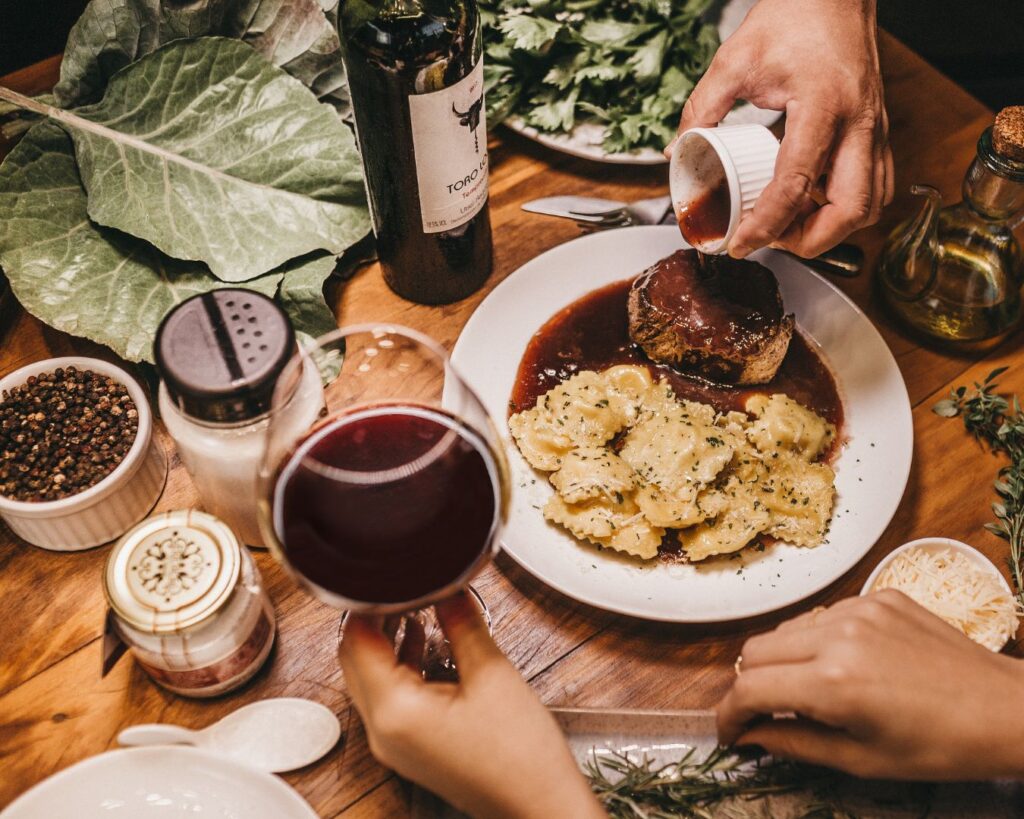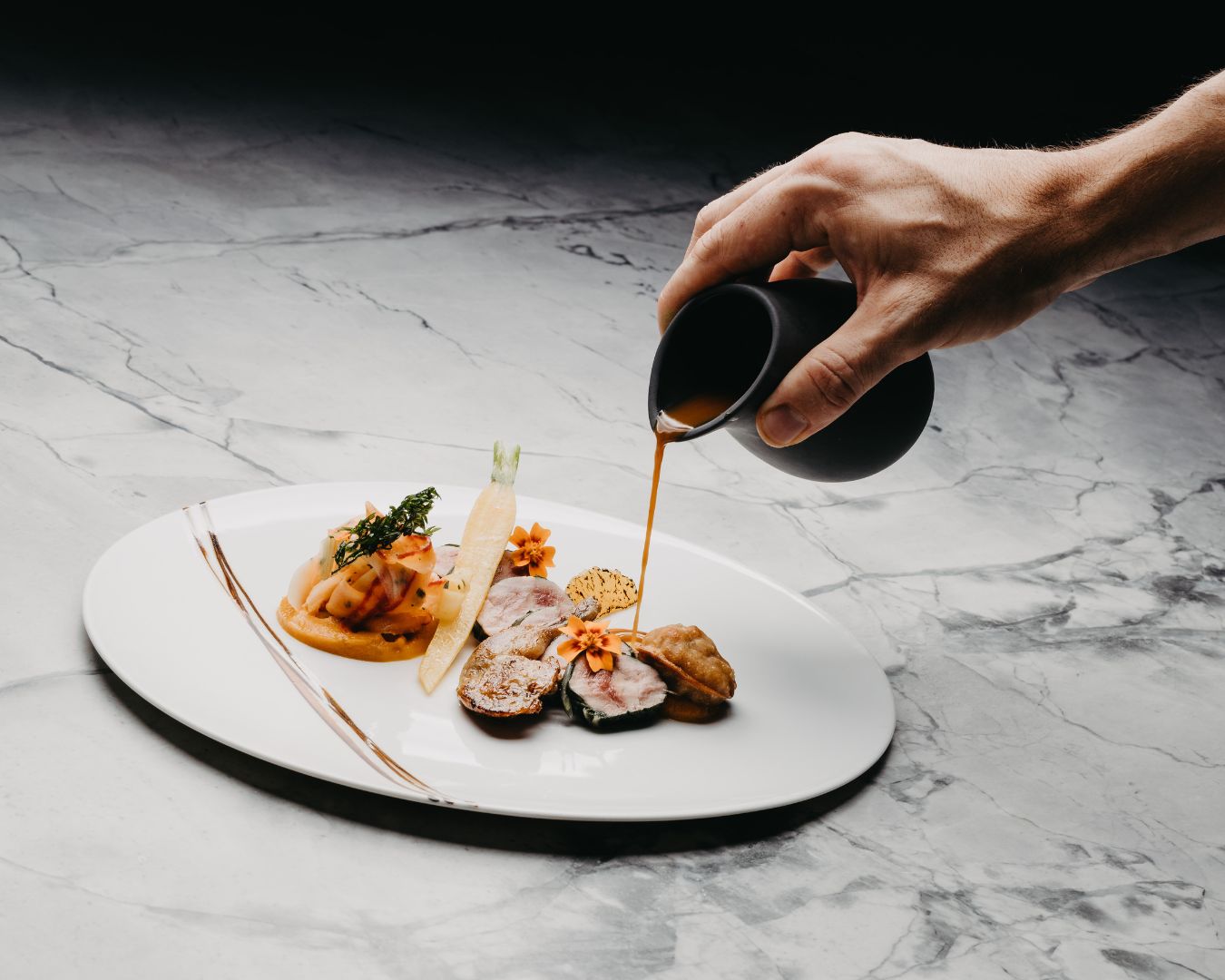Using Garnishes and Sauces to Enhance Food Presentation
When it comes to creating a memorable dining experience, taste is only part of the equation. The way food is presented can significantly impact how it is perceived and enjoyed. Garnishes and sauces play a crucial role in elevating the visual appeal of a dish, making it more appetizing and inviting. Whether you’re a home cook looking to impress your guests or a professional chef striving for perfection, mastering the art of garnishing and sauce presentation can take your culinary creations to the next level. In this blog post, we’ll explore the various ways garnishes and sauces can be used to enhance food presentation, offering tips and techniques to help you plate like a pro.
The Importance of Garnishes
What Are Garnishes? Garnishes are decorative elements added to a dish that can also enhance its flavor and texture. They are typically small, edible components placed on or around the food to add color, contrast, and a finishing touch. Common garnishes include fresh herbs, citrus zest, edible flowers, microgreens, and finely chopped vegetables.
Choosing the Right Garnish: The key to a successful garnish is ensuring that it complements the dish both visually and flavor-wise. Here are some tips for selecting the right garnish:
- Color Contrast: Choose garnishes that contrast with the color of the dish. For example, a sprinkle of vibrant green parsley or chives on a rich, creamy soup can add a pop of color that makes the dish more visually appealing.
- Flavor Harmony: Garnishes should enhance the flavor of the dish without overpowering it. A slice of lemon or lime can add a bright, citrusy note to seafood, while a sprig of rosemary can complement roasted meats.
- Texture: Consider the texture of the garnish as well. Crispy fried onions or croutons can add a satisfying crunch to a salad or soup, while a soft dollop of whipped cream can provide a smooth contrast to a dessert.
- Portion Control: Use garnishes sparingly to avoid overwhelming the dish. The goal is to enhance the presentation, not to cover up the main ingredients.

Examples of Effective Garnishes:
- Herbs: Fresh herbs like basil, cilantro, or dill can add a burst of color and freshness to any dish.
- Edible Flowers: Flowers like nasturtiums, violets, or pansies can add a delicate and colorful touch to desserts, salads, and appetizers.
- Zests and Peels: A twist of lemon, lime, or orange peel can add a refreshing citrus aroma to both sweet and savory dishes.
- Seeds and Nuts: Toasted sesame seeds, pine nuts, or almonds can add both visual appeal and a satisfying crunch to dishes like salads and stir-fries.
The Art of Sauce Presentation
Why Sauces Matter: Sauces are more than just a way to add flavor to a dish; they are also an essential element of food presentation. The way a sauce is applied can change the entire look of a dish, turning a simple plate of food into a work of art. Whether drizzled, smeared, or pooled, sauces can add color, contrast, and elegance to your presentation.

Techniques for Sauce Presentation:
- Drizzling:
- How to Do It: Use a spoon or squeeze bottle to ligh
- When to Use It: Drizzling is ideal for adding a ttly drizzle sauce over the dish in a zigzag or circular pattern. This technique works well with thin sauces like balsamic reduction, olive oil, or vinaigrettes.ouch of flavor and color to dishes like salads, desserts, or grilled meats.
- Smearing:
- How to Do It: Place a dollop of sauce on the plate and use the back of a spoon or a spatula to smear it across the plate in a sweeping motion. This technique is commonly used in fine dining to create a dramatic visual effect.
- When to Use It: Smearing works well with thicker sauces like purees, pestos, or aiolis. It’s perfect for plating appetizers, mains, or desserts.
- Pooling:
- How to Do It: Spoon a small amount of sauce onto the plate and then place the main ingredient directly on top. The sauce should form a shallow pool around the food.
- When to Use It: Pooling is a great technique for dishes like steaks, fish fillets, or desserts that need a rich, flavorful base.
- Dotting:
- How to Do It: Use a squeeze bottle or small spoon to place tiny dots of sauce around the plate. You can create a pattern or randomly dot the sauce for a more abstract look.
- When to Use It: Dotting is ideal for adding a touch of color and precision to dishes with multiple components, such as tasting menus or intricate desserts.
- Layering:
- How to Do It: Layer different sauces on top of each other, either by pouring them in concentric circles or creating stripes. This technique can create a stunning visual effect, especially with contrasting colors.
- When to Use It: Layering is best used with sauces that have different colors and consistencies, such as a vibrant red coulis layered with a white cream sauce.
Pairing Garnishes and Sauces
To truly elevate your food presentation, consider how garnishes and sauces can work together. Here are some tips for creating harmonious pairings:
- Color Coordination: Match the color of your garnish to the color of your sauce for a cohesive look. For example, green herbs pair beautifully with a green pesto sauce.
- Flavor Balance: Ensure that the flavors of the garnish and sauce complement each other. A bright, acidic garnish like pickled onions can balance the richness of a creamy sauce.
- Texture Contrast: Use garnishes to add texture to a saucy dish. Crispy elements like croutons or fried herbs can provide a delightful contrast to smooth sauces.
Garnishes and sauces are powerful tools in the art of food presentation. By carefully selecting and applying these elements, you can transform a simple dish into a visually stunning and delicious experience. Whether you’re drizzling a balsamic reduction over a salad or adding a sprinkle of fresh herbs to a pasta dish, the right garnish or sauce can make all the difference. So, next time you’re in the kitchen, take a moment to think about how you can enhance your food’s presentation with the perfect garnish or sauce. Your eyes—and your taste buds—will thank you!

